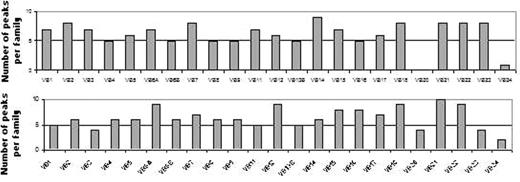Abstract
To minimize toxicity and monitor immune recovery without interference of long term use of immunosuppressive agents, we have investigated T-cell depleted, nonmyeloablative allogeneic therapy using matched family member donors.
Methods: Seventy five patients who were not candidates for ablative therapy due to age or comorbid diseases received fludarabine 30mg/sq m and cyclophosphamide 500mg/sq m IV qd x 4 with alemtuzumab 20mg IV qd x 5 followed by stem cell infusion. No other post transplant immunomodulation was provided.
Results: Patient diagnoses included lymphoma/myeloma (20), leukemias/MDS (30), myelofibrosis/aplasia (7) and metastatic solid tumours (18). The median age was 50 (range 18–17) with a median follow up of 18 months. The median CD34+ cell dose collected was 13.4 x 106/kg. Engraftment occurred in 100% of patients with a median of 97% donor cells responsible for patient hematopoiesis by 3 months. Forty six also had a DLI (range 106–108 CD3+ cells/kg). Overall, Grade III–IV acute GVHD occurred in only 5/75 (7%) and 18 (29%) had grade II–IV. Four patients developed chronic GVHD. The transplant regimen was well tolerated with 4% 100 day treatment related mortality. In those with hematologic malignancies, only 7% started in remission, though 45 (60%) attained a CR. The most common cause of death in this group was progressive disease (28%), followed by infections (5%), and GVHD (5%). A subgroup of 21 of these older, more infirm patients who had high risk AML in 1–2nd CR or PR or ≥2 chronic stable phase CML, partially responding lymphoma, or severe myelofibrosis have been followed for at least 1 year. At 1 year, 13/21 (62%) remain alive and in continuing remission. Phenotypic analysis of lymphocyte subsets (measured by flow) revealed recovery at 6 months.
T cell VBeta family recovery (spectratype analysis using PCR) revealed robust recovery by 6 months as well (first figure pre and second is 6 months post transplant), despite T depletion.
TRECs analysis reveals little, if any, recovery in these patients for at least 12–18 months.
Conclusions: Nonablative allogeneic transplantation using alemtuzumab for T cell depletion results in reliable engraftment with little acute GVHD or TRM. Immune recovery assays reveal that despite T cell purging, T cell subset and VBeta families have significant recovery by 6 months and TRECS results show the recovery is primarily from peripheral expansion of transplanted donor cells, not education of new T cells. These data possibly reflect the advantage of low dose donor lymphocyte boosts without planned long term use of immunosuppressive agents. The future challenge will to be to develop strategies to further improve immune recovery in this setting.
Author notes
Corresponding author



This feature is available to Subscribers Only
Sign In or Create an Account Close Modal